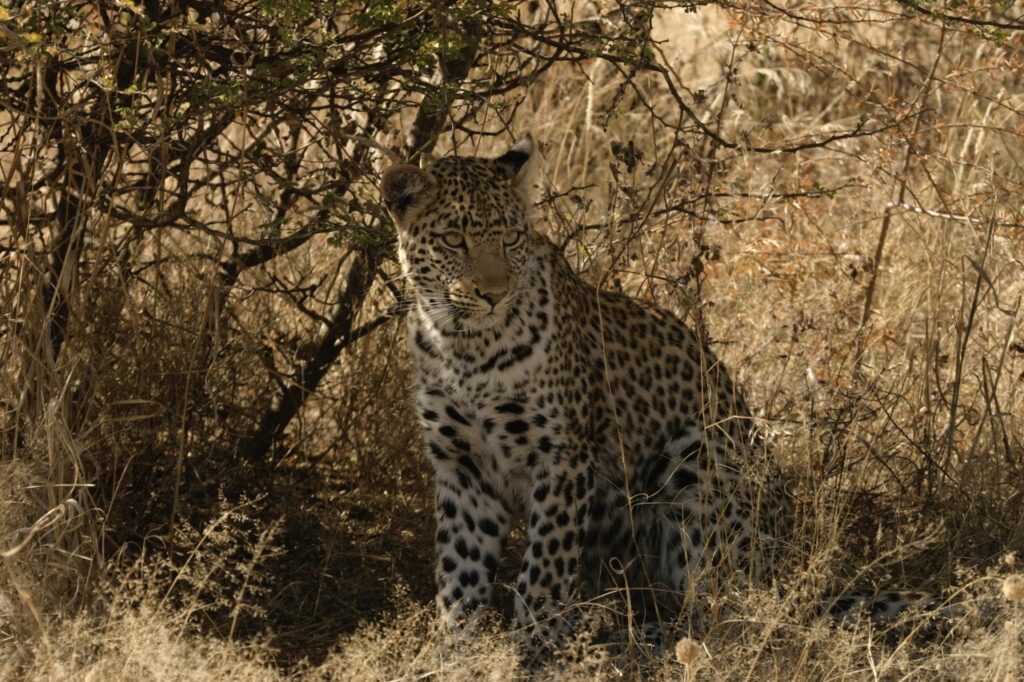Understanding prey availability is at the heart of our conservation work. Predators like leopards and lions don’t live in isolation, their survival is tied directly to the abundance and movement of prey species in their environment. If prey numbers drop or shift location, predator behaviour changes too. They may alter their hunting strategies, roam further, or even come into conflict with livestock and people. By carefully monitoring prey availability, we can better understand these patterns and provide vital information to guide conservation decisions.
At Leopard Ecology & Conservation, we use two main approaches to monitor prey:
- Camera trap surveys
- Spoor (track) and prey count surveys
Together, these methods give us both detailed, fine-scale data and broader landscape-level insights. They help us track not just how many animals are present, but also how they use their habitat, how their movements change over seasons, and how this affects the predators we study.
Camera Trap Surveys
Camera traps are one of our most important tools. These are motion-activated cameras placed throughout our study area, capturing photos of animals as they move naturally across the landscape. Unlike traditional surveys that rely on human observers, camera traps work 24/7, providing a constant and non-invasive record of wildlife.
For our research in Khutse Game Reserve and the southern Central Kalahari, we set up a large-scale grid of cameras covering over 4,000 km². Each station is carefully positioned along game trails, near pans (waterholes), and at road crossings where animals are most likely to pass. Some stations use a single camera, while others use two cameras paired opposite each other to capture both sides of an animal. This is especially useful for identifying individual leopards, whose unique coat patterns act like fingerprints.
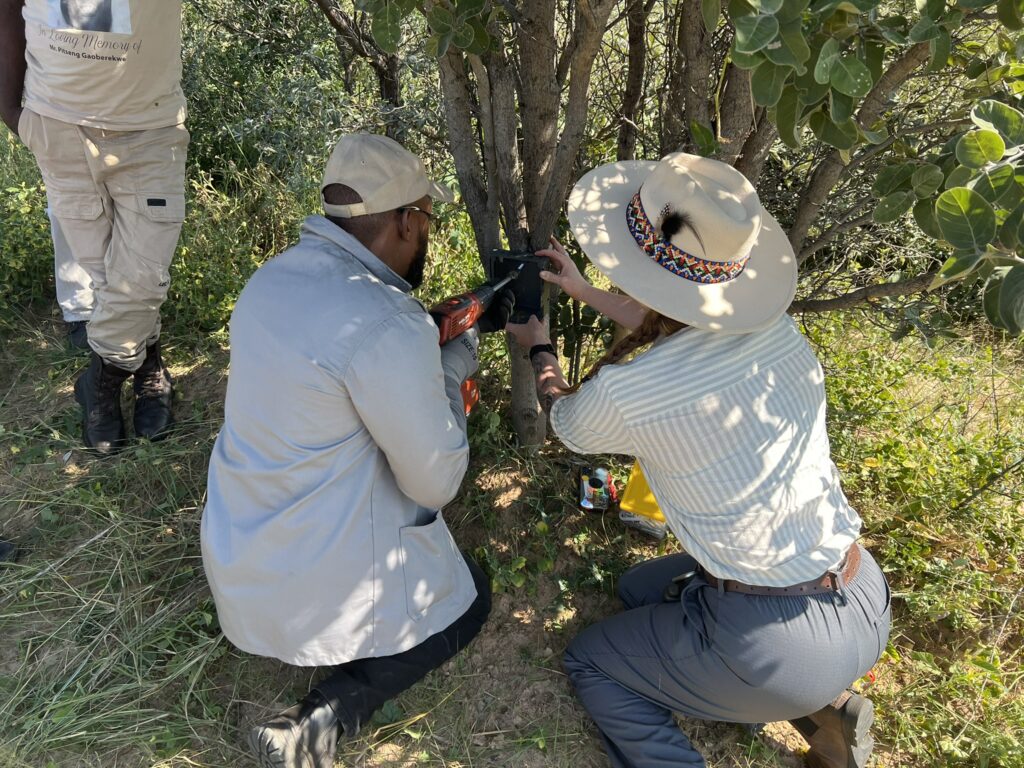
Our cameras use infrared sensors to detect movement and body heat, triggering them to capture high-quality images both day and night. At night, incandescent flashes help illuminate animals clearly without the need for bait or lures, ensuring the photos reflect natural behaviour.
Every few weeks, our team visits each station to replace batteries, swap memory cards, and record habitat details like vegetation structure or proximity to water. The thousands of images collected are then processed using AI tools such as TrapTagger for species identification, and later double-checked by our researchers.
This combination of technology and human expertise ensures that our data is accurate and reliable. Through these surveys, we don’t just count leopards, we also record the presence, abundance, and activity of their prey. From antelope and warthogs to smaller nocturnal animals, the camera traps capture a wide picture of prey availability across the seasons.
Over the long term, this data helps us answer crucial questions:
- Which prey species are most common in certain habitats?
- How does prey availability change before and after the rainy season?
- Do predators shift their diet when certain prey become scarce?
By continuously monitoring these patterns, we can build a clearer picture of the delicate balance between predator and prey in the Kalahari ecosystem.
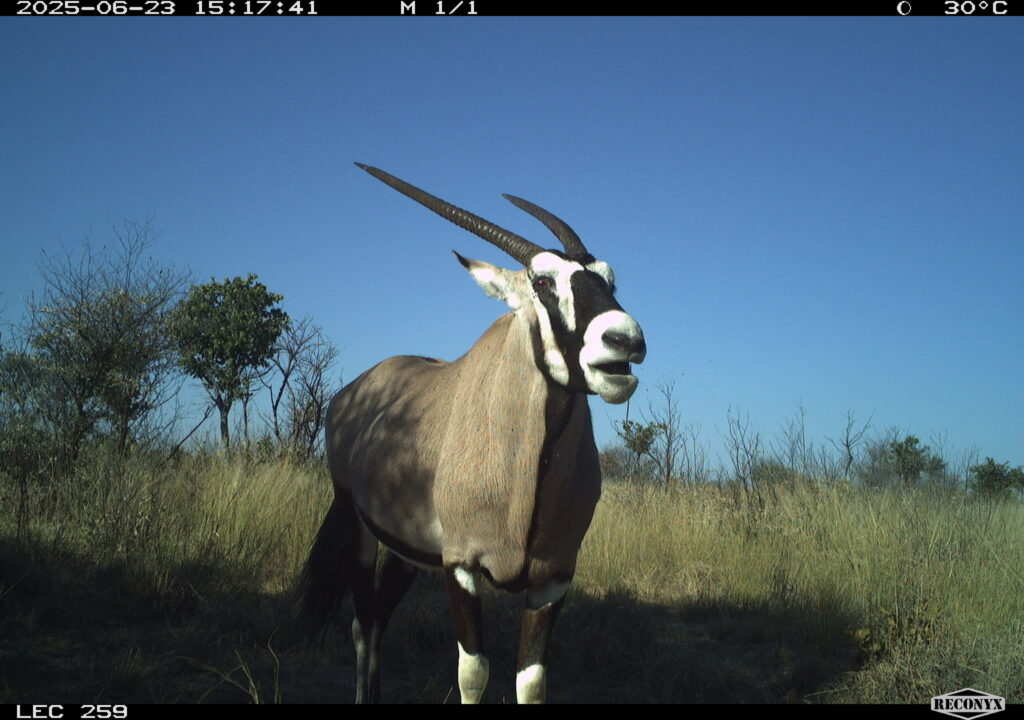
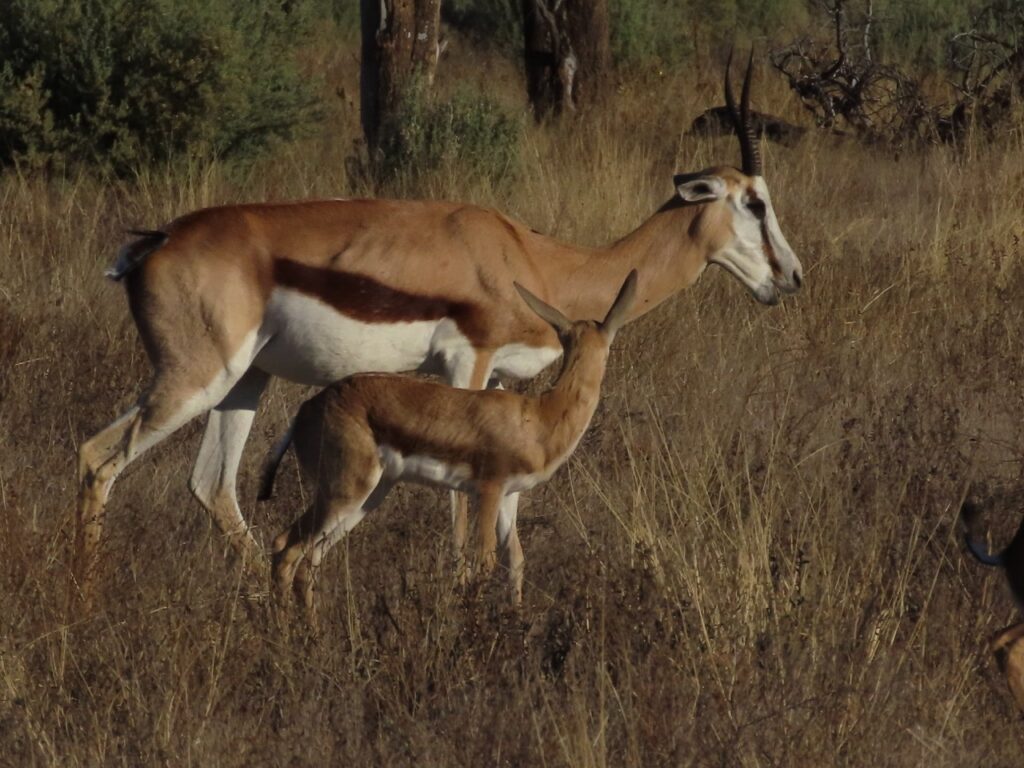
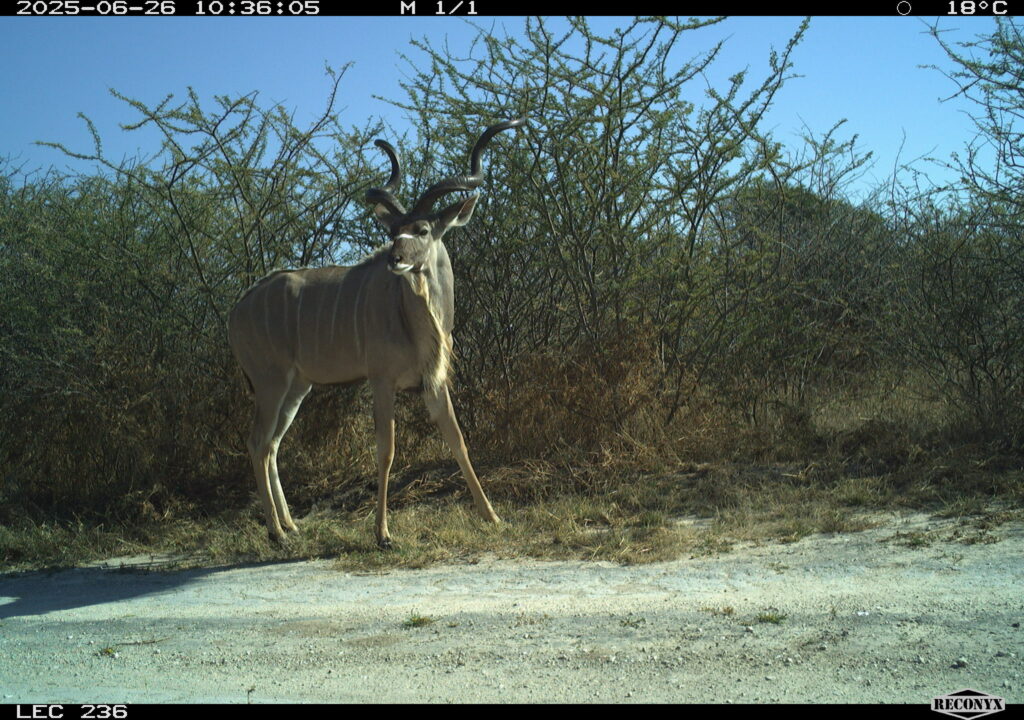
Why Use Both Methods?
Each method has its strengths. Camera traps provide constant, long-term monitoring with visual proof, while spoor and prey counts cover broader areas more quickly and give immediate results. By combining the two, we get the most complete picture possible. Camera trap data can even be used to validate spoor survey estimates, ensuring consistency and accuracy. Together, these approaches help us understand not just how many animals are present, but also how they interact, when they are active, and how these dynamics shift with seasons, rainfall, or human influence.
Looking to the Future
While camera traps and spoor surveys form the backbone of our work today, LEC is always exploring new ways to improve wildlife monitoring. In the near future, we hope to incorporate aerial fixed-wing plane counts to cover vast areas quickly, giving us a bird’s-eye view of prey herds across the Kalahari. We are also investigating the use of thermal drones, which can detect animals using heat signatures even in dense vegetation or at night. These technologies could greatly improve our ability to detect elusive species, map prey movements in real-time, and respond quickly to conservation challenges.
Monitoring prey availability is not just about counting animals, it’s about understanding the lifeblood of the ecosystem. By using camera traps, spoor and prey surveys, and soon aerial and drone technology, LEC builds a multi-layered understanding of how predators and prey coexist. This knowledge doesn’t stay on paper, it directly informs conservation strategies, helps guide wildlife management decisions, and ultimately ensures that both predators and their prey can thrive in the Kalahari for generations to come.
